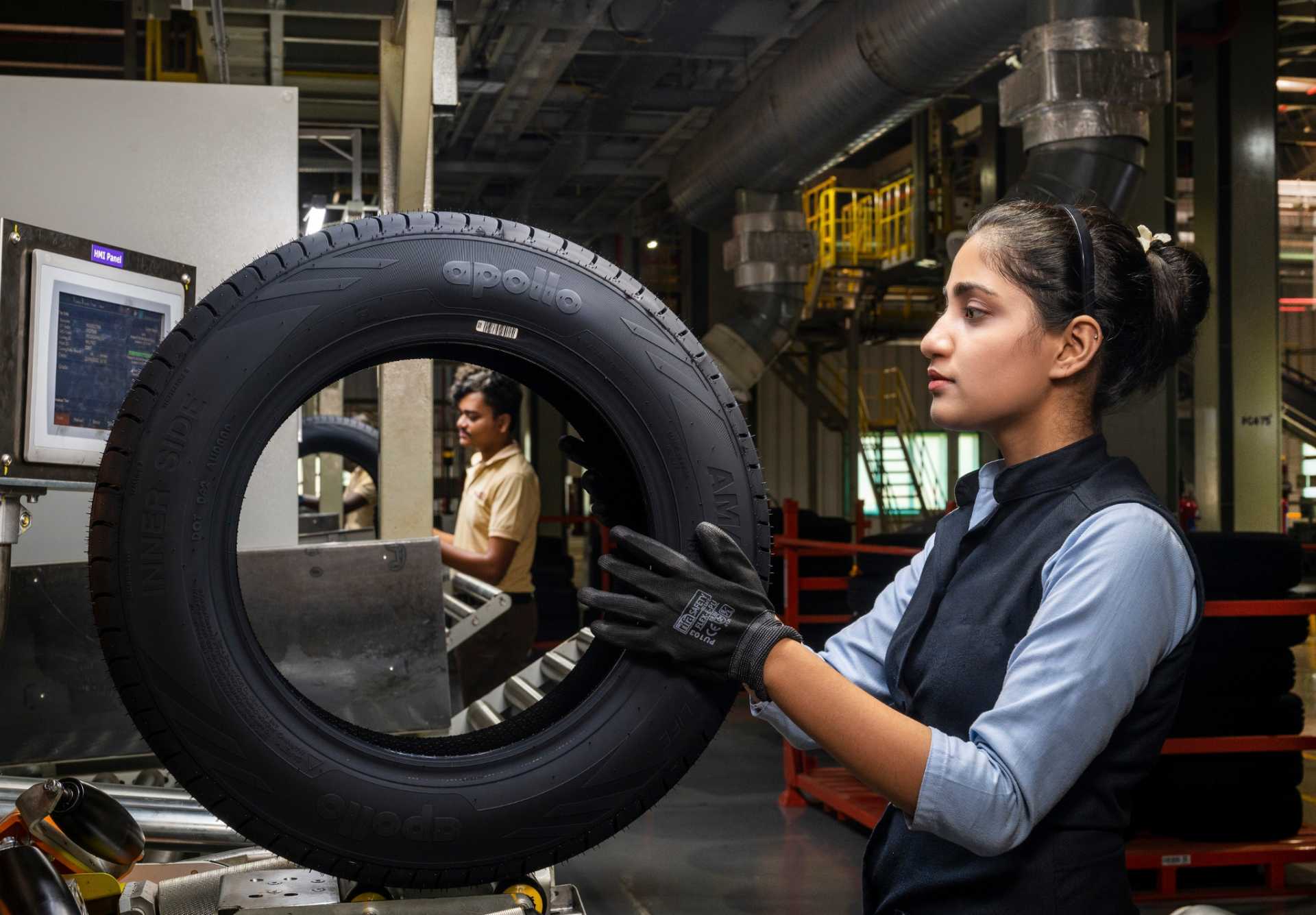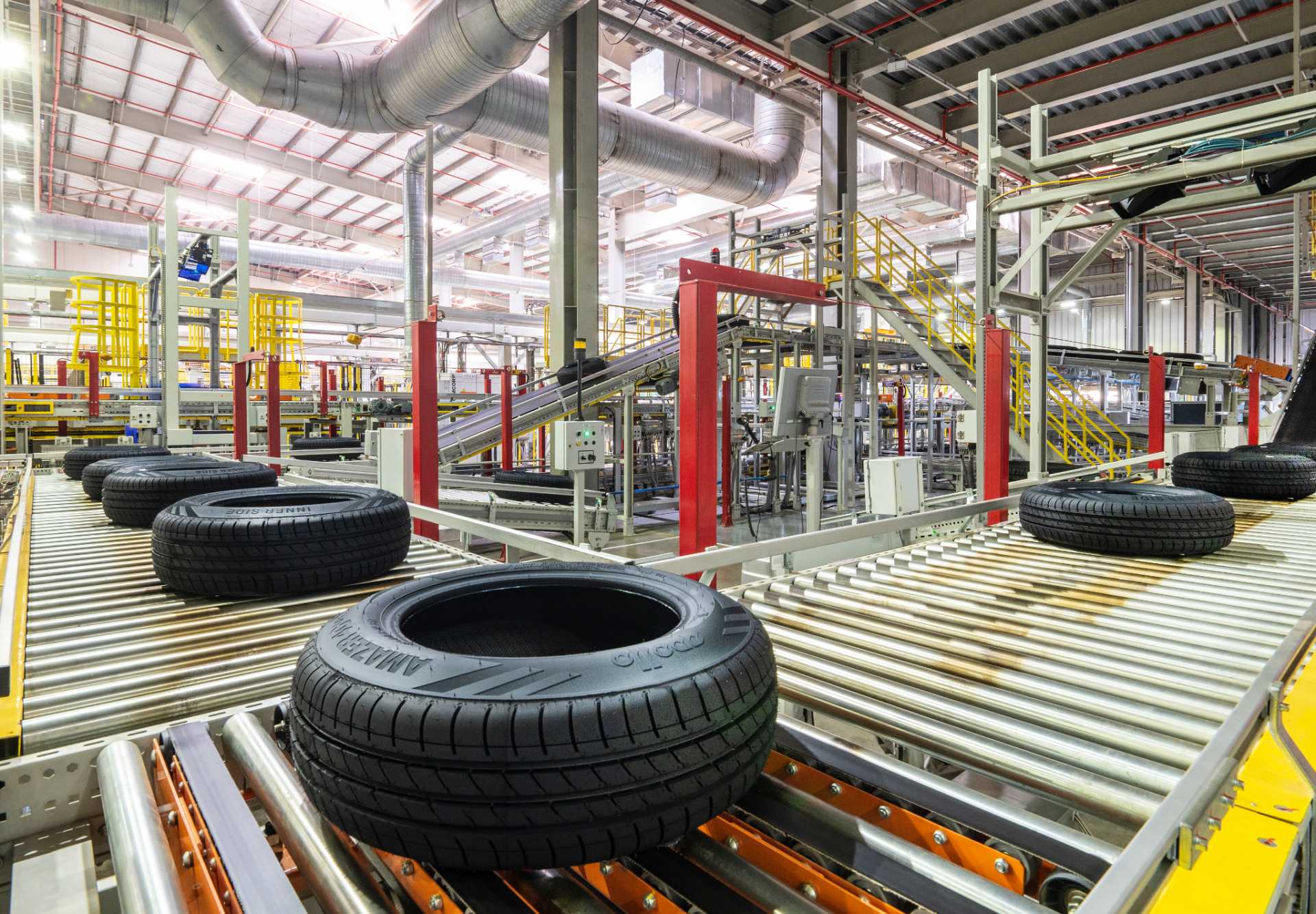As someone who has worked in the tyre industry for decades and more importantly, as a car enthusiast, I know about sharp turns and sudden brakes. Recent events have provided global business with its fair share of them. We live in an era where trade routes can be redrawn overnight, freight costs are very unpredictable and geopolitical rifts – sometimes even fully fledged conflicts – threaten to upend established commerce.
If the last couple of years have taught us anything, it is that no business, large or small, is immune to systemic shocks. From floods interrupting automotive production in Europe to, most recently, escalating tariff tensions, supply chain disruptions have become a fact of corporate life. Modern businesses now need to account for such upheaval pre-emptively and relook at the way supply chains are operated.
A recent McKinsey survey of global supply chain leaders found that nine in ten organisations encountered significant challenges in 2024, ranging from port backlogs to acute resource shortages. Alarmingly, only a quarter of these companies have formal processes to discuss supply chain risks at the board level.
Against this backdrop, one might expect businesses to double down on building resilience. Yet, the data from the McKinsey survey suggests that efforts are losing steam, despite clear vulnerabilities. Leaders indicate that while many have made progress on dual-sourcing and advanced planning and scheduling (APS) tools, initiatives have stalled. That’s a troubling indicator when disruptions are, if anything, likely to increase in the next few years.

The diversification playbook
At Apollo Tyres, we refuse to ease off the accelerator when it comes to fortifying our supply chain. With five manufacturing plants spread across the Indian subcontinent, we also operate two strategic plants in Europe, one in the Netherlands and another in Hungary, supported by robust R&D centres in both India and the Netherlands. This network ensures that if one region experiences a lockdown, conflict or port closure, we have alternatives to keep rolling.
A European facility can ramp up to meet local and regional demand when Indian shipping routes are congested or vice-versa. Our diversified footprint minimises single points of failure, whether caused by logistical bottlenecks, trade barriers or natural disasters. This diversity of production bases isn’t just about mitigating immediate risks; it also positions us to serve more than 100 countries seamlessly through our Apollo and Vredestein brands.
Many manufacturers around the world, whether they produce cars, electronics or industrial machinery, are recognising that a multi-regional strategy is essential to weather the storm. The likes of Toyota and other leading firms have adopted regional manufacturing hubs and local supplier ecosystems so they can pivot swiftly if supply lines in one region are compromised. It’s about hedging bets across geographies, markets and political frameworks.
Like many other companies highlighted in the McKinsey report, we learned first-hand that no single measure, be it larger inventories or multi-sourcing agreements, acts as a silver bullet. Real resilience emerges from a mosaic of strategies:
- Dual-sourcing and regionalisation: 73% of companies surveyed by McKinsey have taken steps toward dual-sourcing. We’ve pursued this path too, ensuring critical components can be produced in multiple locations.
- Digital visibility: We leverage robust global R&D centres in India and the Netherlands, in addition to Digital Innovation Hubs again based in the UK and India, aiming for real-time data and insights across our tier-one suppliers. The latest data shows that 60% of companies now have comprehensive visibility into their tier-one networks—an important step forward. However, deeper-tier visibility remains a challenge for much of the industry.
- Advanced planning & scheduling (APS): Two-thirds of companies are implementing APS, but only 10% have completed deployments. While rolling out APS can be daunting, we see technology adoption not as a “nice-to-have” but as a must-have to rapidly pivot in times of disruption. On that front, we have been working on integrating demand planning and sales forecasting from all our distribution points globally into a single IT solution.
These moves may be resource-intensive, but they protect us from single points of failure that could otherwise cripple our ability to deliver.

Beyond ‘buffer mania’
It’s tempting to solve supply chain hiccups by simply overstocking parts or finished goods, but we are seeing a notable shift away from big inventory buffers. At Apollo Tyres, we balance the need for safety stocks with the wisdom that excessive inventory ties up capital and can mask systemic inefficiencies.
Moreover, building huge warehouses of unused inventory doesn’t address deeper, structural vulnerabilities—like the need for rapid reconfiguration in response to outside events. Instead, we’re investing in integrated planning systems that give us the agility to respond faster than the two-week planning-and-execution window.
However, recent history offers cautionary tales about the limits of inventory buffers alone. Major global retailers such as Walmart, Nike and Target saw inventory surges of up to 44% during the pandemic, tying up billions in working capital and resulting in substantial markdowns when consumer demand shifted unpredictably.
Nike’s inventory, for instance, reached $9.7bn – its highest ever, highlighting the financial risks inherent in uncalibrated buffer strategies. Conversely, Toyota’s strategic approach after the Fukushima disaster is instructive. Rather than uniformly increasing inventory, it selectively built buffers of critical components, such as semiconductors, maintaining two to six months’ supply to safeguard against future disruptions.
Best-in-class companies are turning to predictive analytics, AI-powered forecasting and scenario planning to optimise inventory levels dynamically. Leveraging AI allows companies to move beyond crude inventory buffers, providing an intelligent, responsive approach to fluctuating demand and unforeseen disruptions. Strategic forecasting powered by AI not only delivers operational efficiencies but also positions companies to respond proactively rather than reactively, ensuring agility becomes a sustainable competitive advantage.
These nuanced strategies demonstrate how smarter inventory planning—rather than larger inventory buffers can achieve both agility and cost efficiency, positioning companies to respond swiftly without tying up excessive capital.
Rising adoption of automation
Besides advanced planning and diversification, automation in large-scale manufacturing has been a rapidly rising trend when it comes to supply chain innovation. A Visual Capitalist report suggests, as of 2022, a record 3.9 million industrial robots were operational worldwide – a near doubling in robot density in factories over the past six years. Industries such as automotive and electronics lead this trend, collectively accounting for more than half of global installations. Businesses that fail to embrace automation risk falling behind competitively.
The benefits of geographic diversification also become clearer when integrated with automation. A recent Boston Consulting Group survey found that 56% of senior executives credited declining automation costs with significantly improving the competitiveness of manufacturing in higher-cost regions compared to traditional low-cost labour markets. In practice, automation allows firms to competitively relocate factories closer to their primary markets, negating much of the appeal of outsourcing to distant, cheaper labour markets like China.
This emerging shift is fundamentally altering supply chain architectures, encouraging companies to shorten the physical length of their supply networks and consequently reduce their exposure to geopolitical risks and lengthy disruptions.

Resilience as a sustainability lever
A well-diversified supply chain doesn’t just mitigate risk; it can also open the door to more sustainable operations. For instance, producing closer-to-end markets reduces shipping distances, which in turn lowers carbon footprints and fuel consumption. Moreover, fostering local expertise and sourcing local components can spur job creation and economic growth in those communities, reflecting the broader social dimensions of corporate responsibility. It’s a triple-bottom-line advantage: better risk management, more efficient logistics, and a smaller environmental footprint.
Sustainability-focused supply chains also unlock additional long-term value. Research by Boston Consulting Group indicates that companies embracing environmentally-conscious logistics, such as optimised transport routing and local sourcing, report reductions in emissions by as much as 30%. These improvements also lead to measurable operational efficiencies, including reductions in waste and resource consumption by between 15% and 30%. Thus, sustainability initiatives in supply chains are not merely corporate responsibility projects, they represent prudent business strategies, enhancing profitability, reducing operational risks, and improving overall competitiveness.
Of course, building out these networks is not without challenges. It requires strategic investments, reliable local partnerships, and an organisational culture that is open to flexibility and innovation. Yet, in a world where disruptions have become the norm, these are the very investments that pay dividends in the long run. They ensure that our global workforce, nearly 19,000 strong, and our customers across 100+ countries have the quality tyres they need, when they need them.
Charting the road ahead
In today’s volatile landscape, the pursuit of supply chain resilience is a continuous journey rather than a one-off project. Here’s how we see the path forward for our firm and others:
- Invest wisely in digital: Don’t wait for perfect data. Companies can achieve meaningful returns on APS even with imperfect data sets. The key is to start, measure, refine, and repeat.
- Build and retain talent: Cultivate a talent pipeline versed in both the art of supply chain management and the science of data analytics. Consider deeper partnerships with universities and robust in-house training.
- Elevate supply chain in the C-suite: Formalise risk discussions at the board level. An ad-hoc approach to disruptions is a recipe for failure in a world where challenges arrive unannounced.
- Prioritise agile sourcing and production networks: Dual-sourcing is only part of the story. Companies must continuously optimise footprints, adapt procurement, and forge regional ties.
- Embrace sustainability: Not just for reputation, but also because carbon-efficient supply chains are intrinsically more resilient and cost-effective in the long run.
As business leaders, we must accept that volatility is here to stay. Rather than lament disruptions, we can seize this moment to reimagine supply chains for a more interdependent, responsible global market. Investing in diversified production, forging multi-regional partnerships, and driving sustainability at each step are no longer “nice-to-haves” but genuine must-haves. For Apollo Tyres, and for many others embracing a similar mindset. This approach has helped fortify our ability to serve global demand despite the headwinds of uncertainty.
The lessons of recent disruptions are reshaping how global businesses think about risk and opportunity. Successful companies are blending workforce development, inventory optimisation, regionalised manufacturing, and digital innovation to build resilient, agile supply chains. They are strategically repositioning themselves to respond swiftly to disruptions while maintaining competitive advantages in cost, speed, and sustainability. Companies embracing these strategic adjustments, rather than simply reacting to crises, are setting the benchmark for supply chain excellence, ensuring resilience becomes a permanent strategic capability rather than a temporary fix.
Today, resilience is an integral part of building economic fortitude, advancing environmental stewardship, and ensuring the viability of global businesses in the face of ever-evolving challenges. If our companies are to remain engines of prosperity, we must adopt supply chain strategies that are both global and diversified. In doing so, we can pave a smoother road for international trade – one strong enough to handle the sharp turns and steep climbs that lie ahead.
For more articles like this, visit our Leadership channel.




